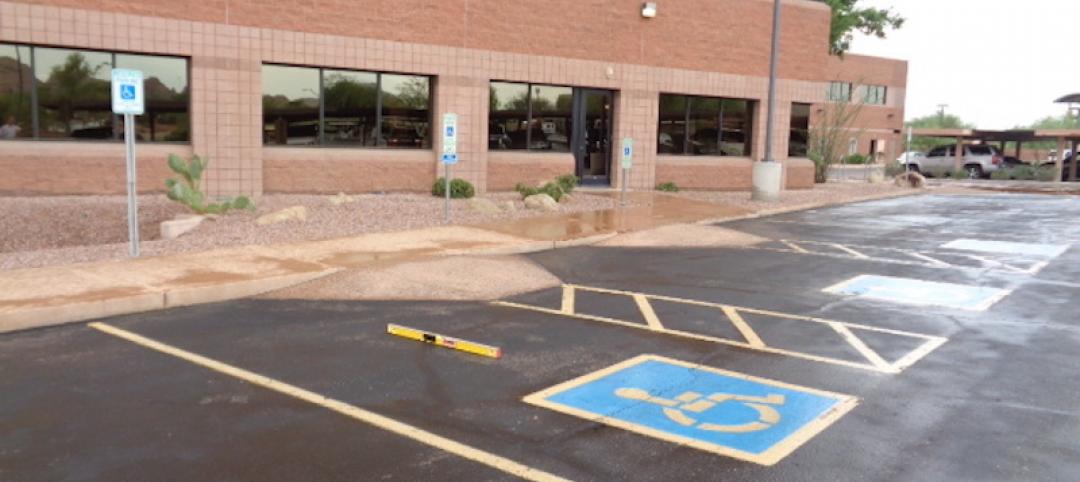Between the pandemic and the current economic situation, businesses of all kinds are rethinking the best way to get things done. Fast-tracking first gained broad awareness when used to develop Covid-19 vaccines, it is an effective strategy used in many aspects of business, including construction. For example, the technology industry is well versed in fast-tracking, not only in product development, but in their many massive data center and manufacturing construction projects too. There’s a lot to be learned from the tech industry’s approach to construction, as it is centered around the guiding principle of being first to market. While typical construction drivers are time (schedule), money (budget) and quality (product), with the right approach, fast-tracking a project can be done.
Construction is booming in the technology industry, especially as many companies are pushing more manufacturing capabilities to the U.S., resulting in more domestic construction projects. Data center construction, for example, reached $1.4 billion through the first quarter of 2022, which is up nearly 30 percent year-over-year. Many of these projects are schedule driven, as tech companies are driving these construction projects like they drive product development. Seeing the success of these projects, other industries are following this lead, with more and more construction projects being done with at least some fast-tracking techniques used. Understanding both the rewards and risk of fast-tracking a project can help owners, architects, engineers and contractors maximize the benefits of this strategy.
Reduced Construction Time Can Result in Financial Benefits
Ultimately, a faster schedule means a facility opens earlier, so a business can move in and start realizing revenue. There can be cost savings made through fast-tracking the project if careful planning and execution take place. With a compressed schedule moving a project along more quickly, inflation will have less impact on any potential increases in materials costs, given the materials are secured earlier in the schedule, which stabilizes those costs. This can be accomplished through use of a Letter of Authorization (LOA) or a Limited Notice to Proceed (LNTP). There is the potential to secure long-lead items in a timely fashion while ensuring the schedule is not delayed due to shipping, manufacturing, or procurement. Potential cost savings like these can reduce the cost and risk of financing these projects and contribute to making a project economically viable because of the quicker return on the investment.
Construction and design move concurrently through much of a fast-track project and often, construction decisions are made and in place before final design approval. As a result, minor changes like moving a wall or electrical may need to occur after they are built but having a fully integrated and communicative team ensures a reduction in such spends. Usually, the cost savings from fast-tracking significantly outweigh these type of changes and are an accepted part of a fast-track project.
When it comes to labor costs, a project’s cost manager can lend a critical eye in understanding where there are hidden costs. Having existing relationships may help as some vendors may see a fast-tracked project as an opportunity to increase rates. For example, a review of labor costs should include analysis of how much staff, and at what level and rate the general contractor is carrying within the estimate. There may be allowances, holds, or yet-to-buys shown throughout an estimate that artificially inflate the cost. Additionally, increases in contingency percentages for the project, construction or design without contractual documentation add significant below the line values.
Overall costs can be impacted by going direct to a vendor essentially reduce overall management costs. Having strong relationships with vendors can alleviate this issue as they understand the expectation of a job. The client (Owner) may not be savvy in reviewing such detailed items and having a Cost Manager can ensure cost savings throughout design phases and the construction project. Generating cost savings within a capital expenditure budget gives the client budget flexibility.
Teamwork and Communication
Relationships matter in getting a job on the fast-track as compressed timelines bring teamwork to the forefront in a project’s success. One key component to relationship management during fast-tracking is communication with the design team. Designers have a separate schedule with each phase providing an increase level of information as the scope becomes more clearly defined. Conducting Owner Architect Contractor (OAC) meetings is imperative as this one meeting brings together all the players to share ideas, identify point conflicts, and discuss the project collectively.
By working as a single team with one common goal, this kind of regular communication can help avoid disruptions that could cause serious time delays. It’s beneficial if the architect, engineer, and contractor have worked together in the past because establishing a solid cultural fit and existing relationships help with learning curves, metrics and client-specific standards. With fast-track projects, many aspects are changing simultaneously, requiring both regularly scheduled OAC meetings and open, ongoing communication to make quick decisions.
Managing Vendors and Materials
Introducing an internal or external cost-control team as early as possible when a project is started is important to fast-tracking. When a cost manager is integrated into the team from the beginning, relationships are established immediately with the project managers, the administrative staff, architects, engineers and the general contractors. These relationships give a full picture of the project is gained, giving a cost manager perspective of what the owner is driving for, while providing insight to contractual obligations. A cost manager will perform deep dive reviews on proposals, estimates, change orders, invoices and contracts, often using benchmarking data and client-specific metrics, to provide an accurate and valid value, in an effort to be fair and reasonable.
The construction industry looks anything but typical right now in terms of resource availability. Many owners lean into relationships with a set group of general contractors they regularly work with, knowing how they work, their standards, processes, and safety records intact. There are benefits to tapping into the intellectual knowledge that comes with hiring a familiar GC as long as you aren’t lulled into a sense of complacency when pulling estimates together, or not diversifying the bidding pool.
As we all slowly recover from the last two years of inconsistent resource availability, we are learning to adjust, especially when it comes to schedule delivery. Materials like steel, drywall, and furniture that have had long lead times, now lumber, mass timber, HVAC equipment, tile, doors and lighting are taking longer than usual to get onsite. To effectively fast-track a job, careful consideration must be given to material ordering. For example, some things need to be ordered early and stored onsite, or in shipping containers and that needs to be factored into the budget. While sometimes having money to expedite shipping can help, for the most part, expediting materials is a thing of the past because of resource shortages on the supplier side. Before construction, during the contractual finalization bridge funding and limited notices to proceed documents can be used to aid general contractors in ordering ahead of time.
At every phase, it’s important to monitor and review estimates and timelines while reviewing against what the general contractor is providing. Getting perspective from others through peer reviews provides a checks and balance system to ensure cost effective trade values. A peer review will confirm if a final contract is lining up with a client’s standards and current market rate value. It can help determine if percentage markups are reasonable, if the right value of contingency is provided or if there are agreed upon fees and insurance through the client. All these line items are considered when doing a peer review.
As the construction industry continues to face a variety of challenges including labor shortages, supply chain issues and escalating material costs, implementing fast-tracking techniques into projects can help address some of these challenges and ongoing changes that continue to present themselves. Take a page of out of the technology industry play book and consider implementing some aspect of fast-tracking into your next project. Understanding both the rewards and risk of fast-tracking a project can help owners, architects, engineers and contractors maximize the benefits of this strategy and can bring great reward on all fronts when managed properly.
More from Author
Rider Levett Bucknall | May 31, 2022
Checking out: Tips for converting hotels to housing
Many building owners are considering repositioning their hotels into another property type, such as senior living communities and rental apartments. Here's advice for getting started.
Rider Levett Bucknall | Feb 14, 2022
How building owners and developers can get ahead of the next supply chain disaster
Global supply chain interruptions that started at the very beginning of the pandemic are still with us and compounding every step of the way. Below are a few proven tips on how to avert some of the costly fallout should we be faced with similar commercial disasters at any time in the future.
Rider Levett Bucknall | Jul 24, 2019
Design goooals for football stadiums: Lessons from the U.K. and the U.S.
Both professional soccer and football have vigorously pursued targeted global growth.
Rider Levett Bucknall | Apr 30, 2018
Following—and forecasting—the money: Financial modeling for project managers
To wait until there’s a problem affecting design and construction before consulting with a PM wastes valuable time when a project is at its most vulnerable point.
Rider Levett Bucknall | Jan 11, 2018
Harvesting energy and profits: A new approach to MEP cost analysis
In the course of providing cost estimating services, educating the client on making prudent choices is a high priority.
Rider Levett Bucknall | Sep 6, 2017
Following the money: G702 progress payment certifications
There is no single method of calculating progress payments, but the most common formula is the percentage of completion applied to the total contract price, less a retainage which is held by the owner until final acceptance of the project.
Rider Levett Bucknall | May 3, 2017
Avoiding trouble in paradise: Tips on building successfully in the Caribbean
The island setting itself is at the root of several of these disruptive assumptions.
Rider Levett Bucknall | Feb 8, 2017
Don’t leave your office or business vulnerable to drive-by lawsuits
Across numerous states, unscrupulous attorneys are filing hundreds of “drive-by” lawsuits that are founded on noncompliance with ADA regulations against businesses that often have no idea they have done anything wrong.
Rider Levett Bucknall | Nov 10, 2016
Prescription for success: Managing technology in the design of healthcare facilities
While the benefits of intelligently deployed technology are abundantly clear to both designers and healthcare end-users, it’s no simple task to manage the integration of technology into a building program.
Rider Levett Bucknall | Aug 29, 2016
Home maintenance 101: How uninformed homeowners can cause developers big headaches, and what to do about it
By taking a proactive stance, the home-building industry can both educate the public about the importance of home maintenance and raise awareness within the construction community about protecting their professional rights and reputations.















